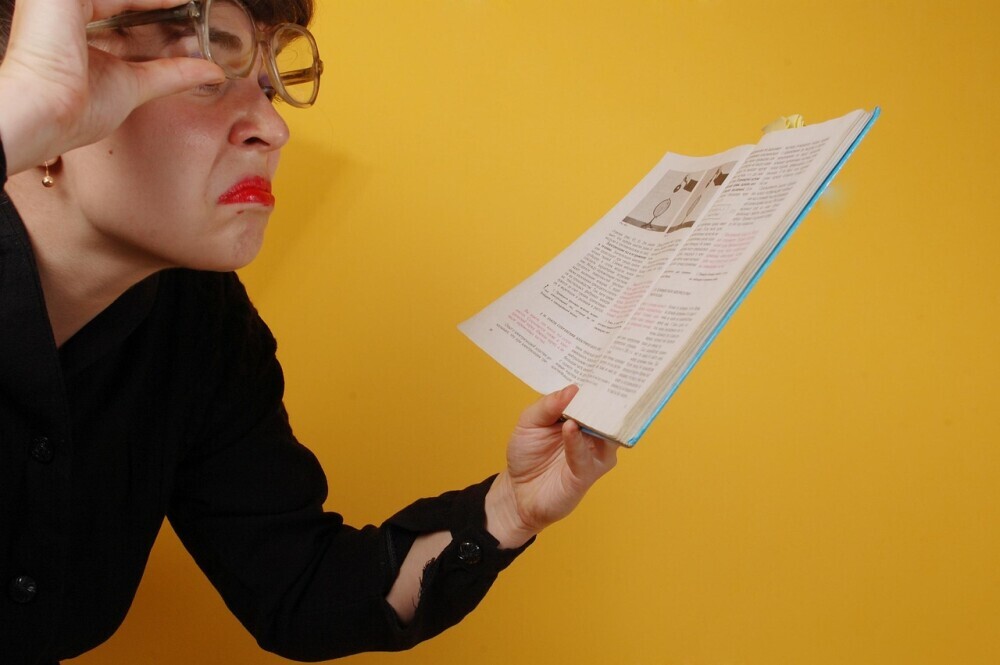Ok, this question is close to my heart as I’m a Spanish tutor. However, I will try to be as objective as possible. I have to say that I get asked this a lot, especially by people who want to move quickly from rusty memories of high school classes to holding real conversations.

Is a Spanish Tutor Really Necessary?
It’s true that some people reach conversational Spanish without sitting down with a tutor. There are apps, podcasts, YouTube channels, flashcards, and a huge pile of free grammar resources online.
But I would say, for the majority of people, working with a tutor speed up their progress and fix stuff they might miss on their own. Especially when it comes to receive feedback or speak the language.
A tutor mostly helps in two big ways: accountability and feedback. When you have a tutor, you have more chances of staying motivated and showing up to practise regularly. It’s easy to let solo study slide when you’re only answering to yourself. Plus, even after years of self-study, many students find out they’re being saying something wrong for ages until a tutor pointed it out.
While tutoring is great for many folks, it isn’t the only route to fluency. Group classes, language exchange partners, and totally self-driven approaches can work just as well if you stick with them.
The choice often comes down to your goals, budget, and learning style. In fact, some learners enjoy the freedom of building their own schedules and focusing on what interests them the most.
How Tutoring Helps You Learn Faster
The biggest perk with a tutor is getting real-time corrections. Having someone who can immediately tell you if you’re using the wrong tense, or gently correct your pronunciation, is pretty handy.
In my experience, this keeps small errors from becoming permanent habits. Getting constructive notes on the spot can save you from backtracking later and makes you feel more confident using Spanish in real life.
In this respect, I’ve noticed that there is a big difference in terms of progress between students who take notes and those who do not. I would say that those who take notes progress twice as fast.
- Personalized lessons: A good tutor figures out where you’re stuck and customizes lessons to help you push past those hurdles, instead of going over material you already get.
- More speaking practice: Most tutors, especially those online, keep you speaking as much as possible. Even basic conversation lessons force you to think on your feet in Spanish, and you quickly notice your listening skills improving, too.
- Cultural context: Native-speaking tutors slip in cultural tips and natural turns of phrase you won’t always pick up from textbooks or apps.
- Accountability: Knowing that someone’s waiting for you on Zoom or in person gives you a reason to study and show up, even on those days when you’d rather do anything else. This consistency keeps you on track, even when progress feels slow.
For example, suppose you’re trying to master the tricky past tenses in Spanish. A self-study app might drill you with fill-in-the-blank questions, but a tutor can walk you through real examples, clarify your confusion, and challenge you to use the past tense in conversation. Over time, this approach gives a huge boost to your confidence and helps those new grammar patterns stick for good.
Potential Downsides of Relying on a Tutor
Tutors can be expensive, especially for intense schedules with multiple lessons each week. The price varies a lot depending on where your tutor lives and their qualifications. Online options are more affordable than inperson lessons, especially if you’re open to teachers from Latin America. Still, costs do add up if you plan on a long commitment or want to accelerate your learning.
Another thing to remember is the risk of burnout. Signing up for five lessons a week sounds ambitious, but it’s tough to keep up if your job, school, or life gets hectic.
It’s often more practical to start with two or three lessons a week, then add more as you build stamina and figure out your optimal routine.
Tutoring alone probably won’t get you to fluency. Without extra practice outside of class, like listening to podcasts, watching shows in Spanish, reviewing vocab, or chatting with other learners, gains can be slow. The real secret is mixing tutoring with lots of input and practice during your free time. Treat the tutor as a coach or guide, but remember you’re still in the driver’s seat when it comes to your overall progress.
When a Tutor Makes the Most Sense
People at different stages benefit from tutors in different ways. Here’s when I suggest considering one:
- Past the basics, but rusty or stuck: If you learned Spanish years ago and have a good base, a tutor can reactivate your skills quickly and fill gaps that textbooks miss.
- Serious about conversation: If your main goal is holding real conversations soon, nothing beats regular speaking practice with someone patient who points out awkward phrasings or pronunciation slips along the way.
- You want custom help: If you’re struggling with grammar explanations, strange pronunciation rules, or want to focus on a specific accent or region, a tutor targets those areas in a way apps can’t.
- Accountability matters to you: Some folks, and here I speak for myself, just stick with learning goals better when they’ve got appointments on the calendar and have paid in advance.
For professional or travel goals, a tutor can quickly get you comfortable with the sort of vocabulary and cultural tips you won’t find in standard lessons. Suppose you need Spanish for work in hospitality, health care, or tourism—a tutor will gear lessons toward your daily needs, prepping you to handle real-world situations confidently.
When You May Not Need a Tutor (Yet)
Getting started with Spanish doesn’t have to involve a tutor right away. Beginning learners often save money by covering fundamentals solo, using free or super cheap apps. Here’s when self-study probably makes more sense:
- Starting totally from scratch: Learning the alphabet, numbers, basic greetings, and common phrases is super easy to do solo with Duolingo, Mondly, YouTube, or language workbooks.
- Unsure about commitment: If you’re still figuring out if Spanish is for you, free resources give you a taste without a big investment. You can always pick up tutoring when you’re ready for the next step or want to take it up a notch.
- Budget’s tight: Consistent, quality tutoring adds up, so selfstudy is a solid first step if you’re trying things out or need to save up.
Many students find that after some months of daily app practice and binge-watching Spanish YouTube videos, are way more comfortable starting conversations with a tutor than if they’d jumped in cold as total beginners.
Supplemental Strategies to Speed Up Learning
Even with a tutor, the fastest progress happens when you combine lessons with tons of outside practice. Here are some methods that really made a difference:
- Binge watch Spanish TV shows or YouTube channels. ideally with Spanish subtitles on. This helps your brain adjust to natural speed and informal speech. Telenovelas and Spanish-language news are great for building your listening comprehension. In the case of TV shows it’s good to have the subtitles active, so you can get used to the sound of the Spanish while enjoying what you’re watching. On the other hand, on YouTube you can find videos in comprehensible input that are specifically aimed at learning Spanish as you learned your mother tongue. In this case, you would not need to have the subtitles on.
- Use flashcards (like Anki or Quizlet) to drill tricky verb forms or everyday vocab whenever you have a few minutes free. Making your own cards can help you memorize words that matter most to you.
- Language exchange apps (like Tandem or HelloTalk) pair you with native Spanish speakers learning your language, making chats low-pressure and free. Sometimes, these connections turn into lasting friendships, which keeps you motivated.
- Write a journal in Spanish about your day, or try short stories. Many tutors are happy to correct your writing between lessons, and some online communities even offer quick feedback on your posts for free.
Additionally, don’t underestimate the power of reading simple books, comics, or even social media in Spanish. In this sense, graded readings are the best way to start. Every bit of exposure helps your brain get used to the new language rhythm. And when you review, make a habit of speaking out loud—even if you’re just reading a menu. This builds confidence and gets you ready for real conversations.

Picking a Good Tutor for Spanish
Not every tutor is a perfect match, especially if you’re looking for something specific from your lessons. Here’s what you should look for when choosing a tutor (especially for beginners or rusty intermediates):
- Structured lessons: Beginning learners do best with clear plans, lots of visual aids, and real activities. Not just casual conversation, but enough structure that you feel real progress week to week.
- Adapts to your level: Good tutors use simpler words and explanations when you need it and ramp up the challenge as you get comfortable. Ask about their teaching style up front and see how flexible they are in switching gears.
- Constructive feedback: Corrections are super important, but it is also important to know when to give it. The best tutors find a good balance and keep you relaxed.
- Trial lessons: I always recommend testing a few tutors. This helps you find someone whose personality and teaching style mesh with your learning needs. First impressions matter, so if you feel comfortable with your tutor, you’ll learn faster and stay motivated.
Feel free to ask about their experience, approach to homework, or how they handle grammar explanations before committing to a longer course. Some tutors even offer free or discounted first sessions, so you can check in and see if their teaching style suits you.
In this regard, a good place to find mentors is on social media, such as Instagram or TikTok. Alternatively, you also have the option of platforms such as Preply and Italki. If you access with the link I leave you here you can get a discount.
Frequently Asked Questions About Learning Spanish With and Without a Tutor
Question: Can you really get fluent in Spanish without any tutoring?
Answer: Some people reach a decent level with self-study and immersion. Consistency is more important than which resource you use. You may hit plateaus, though, especially with speaking, unless you get some kind of real feedback, like language exchanges or group practice.
Question: How many lessons per week is ideal?
Answer: Two to three a week is manageable and gives your brain time to rest and absorb new material. Daily sessions are fine for short, focused periods, but watch out for fatigue or burnout. I found that balancing lessons with solo review time worked best for steady progress.
Question: What if I can’t afford a tutor?
Answer: Tons of great content is free or cheap, especially starting out. Try language exchange partners, volunteer conversation groups, or public library resources. Once you make some progress, you can always add in occasional paid sessions for a boost.
Bottom Line: Who Needs a Spanish Tutor?
Tutoring is a powerful tool for learning Spanish, but it’s not the only way. Most people get the best results mixing speaking practice, self-study, and plenty of listening and reading input. If you want structure, accountability, and fast feedback, a tutor is definitely worth checking out.
Take time to try out a few tutors, avoid overload, and keep mixing in other forms of practice to get conversational as soon as possible. With the right approach, you’ll soon spot your growth, feel more at ease speaking, and definitely you’ll have some fun along the way.
Guess what? When you click and buy through our links, you’re not just boosting your Spanish skills—you’re supporting us at no extra cost. It helps us keep delivering top-notch tips and resources to you. It’s a win-win for both of us!


